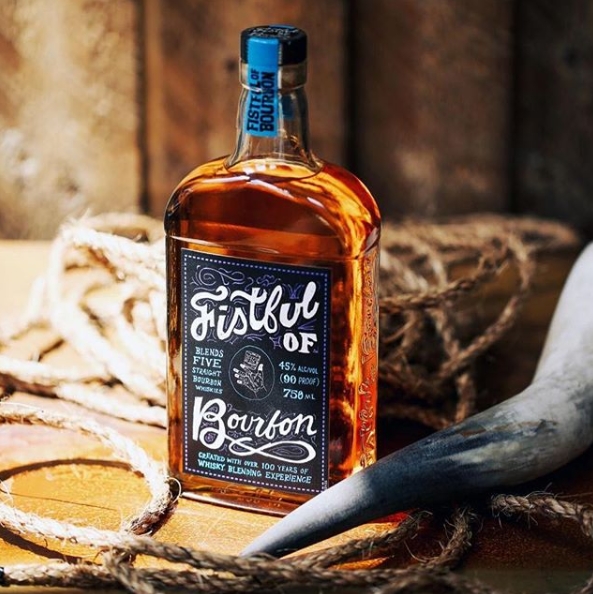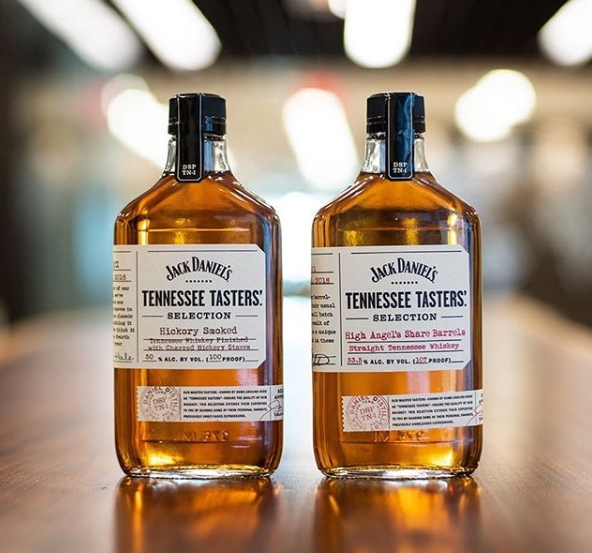
Picking the best whiskey is never an easy task. And the first obstacle to finding the whiskey you love is understanding the regional differences that make each whiskey (or whisky) unique. First, there’s “whisky” from Scotland, Canada, Australia, mainland Europe, India, and Japan. Then there’s “whiskey” from Ireland and America. Then there’s a long list of variables within those regional constraints. Single malts, blends, single casks, bourbons, ryes, corn, white dog … the list goes on. It can all get a bit overwhelming.
We’ve parsed what makes Irish whiskey great; so, now, let’s dive into American whiskeys. Tennessee whiskey and Kentucky bourbon whiskey feel like very similar commodities. The two states are neighbors after all. Yet, Tennessee whiskey and bourbon are very different beasts. These are just different drinks that have rabid and divergent fan bases.
So, what makes Tennessee whiskey different from Kentucky bourbon? We’re here to break that down for you in detail so that next time you’re standing in the whiskey aisle at the liquor store you’ll be more informed. Let’s dive in.
What is Kentucky Bourbon Whiskey?

It should be noted that there’s probably no single “inventor” of Kentucky bourbon. It’s way more likely that many of those living in Kentucky in the early 1700s were all tinkering with corn and grain distillate to varying degrees until some order shook out in the 1800s. The stories of Elijah Craig and Jacob Spears being the first distillers to age a corn-fueled spirit in charred oak may be true. It may not.
Either way, what we now know as “Kentucky bourbon” was born through those settlers around the late 1700s in Kentucky. And what was born was alcohol that’s has a specific set of factors that make it “bourbon” (according to loose trade laws). Those factors run deep. First, to be called bourbon, the distillate has to be at least 51 percent maize (corn) mash. That means the mash bill (the recipe for the cereals and grains used for the initial fermentation) has to be majority corn. Now, that doesn’t mean it can all be corn. When the mash bill hits the 80 percent mark with corn, it’s no longer bourbon. It becomes “Corn Whiskey.”
So, corn is a crucial element, but not too much corn. Next is the aging process. Bourbon needs to be aged in a new American oak barrel that’s been freshly charred. If the distillate is aged in anything besides new American oak, it cannot be called bourbon. Lastly, to be called bourbon, the spirit has to meet specific alcohol by volume (ABV) requirements. These are the numbers you need to know: 80 percent, 62.5 percent, and 40 percent. Simply, the booze is distilled to a point no higher than 80 percent ABV, goes into the aging barrel at 62.5 percent ABV, and is bottled at 40 percent (or slightly higher) ABV.
Straight bourbon means that there are no other additives in that whiskey. And, most bourbons have to have been aged for a minimum of two years. That’s not as strict a requirement as you may think. A whiskey can still be called bourbon as long as it’s aged for any amount of time. But to be called “Straight bourbon” it needs to rest for a minimum of two years in a barrel.
Lastly, and maybe most confusingly, bourbon can be produced anywhere in the United States (or world) technically. As long as it meets the above requirements, it doesn’t really matter whether or not it’s made in Kentucky. Though, according to estimates, at least 95 percent of all bourbon is produced in Kentucky.
What is Tennessee Whiskey?

Tennessee whiskey has often been classified as “Tennesse bourbon whiskey” throughout history, and with good reason. The process for making a whiskey in Tennessee is basically identical to making bourbon in Kentucky. But wait! Don’t throw up your hands in frustration just yet. There is a big difference here.
Tennessee whiskey needs to be at least 51 percent corn-fueled, aged in new American oak (though that’s not always the case), and meet the ABV requirements that bourbon does. But before Tennessee whiskey goes into the barrel for aging, it has to go through a filtration process called the Lincoln County Process (Jack Daniel’s originally set up shop in Lincoln County and spearheaded the process).
The Lincoln County Process is a filtration method wherein the fresh distillate from the stills is filtered through maple charcoal chips or “ricks.” Usually, the distillery will make their own ricks by dousing maple in the highest ABV version of the spirit and lighting them on fire. Just as the maple turns black, it’s doused in water to stop the burning process, making the charcoal ricks. Then, the proto-whiskey is either gravity fed or pumped through the ricks in a large vat for a few days before it goes into the barrel for aging.
That, folks, is a huge difference. Oh, and Tennessee whiskey has a great George Jones song that was covered recently by Chris Stapleton. So there’s that too.
Just for clarification: Not all whiskey made in Tennessee is Tennessee whiskey (but all Tennessee whiskey has to made in Tennessee). Unless the distillate goes through the Lincoln County Process, it cannot be called Tennessee whiskey. Ironically, the only whiskey still produced in Lincoln County is Prichard’s, and they do not use the Lincoln County Process to make their whiskey. They are still making “Tennessee Whiskey” because they were grandfathered in before Tennessee’s state laws started defining the process.
The Difference:

Filtration means the booze is going to taste different. We can use vodka as an example here. Vodka’s taste and quality vary greatly according to how many times and through what it’s been filtered. So, as you can surely imagine, filtering what could essentially be bourbon through maple charcoal ricks is going to change the taste of that whiskey drastically.
There’s a healthy dose of science involved here. The few days Tennessee whiskey spends soaking on the maple ricks changes the chemistry of the drink. Food scientists at the University of Tennessee conducted a chemical study of Tennessee whiskey using gas chromatography (that’s when a compound is vaporized so analysis can be done).
Trent Kerley, who headed the project, noted that after the Lincoln County Process was employed on the corn distillate, a massive change took place chemically.
“I was expecting it to have an effect,” Kerley reported. “But I wasn’t expecting as large of an effect as we saw in some of the compounds. For example, levels of some compounds declined by up to 30 percent after LCP [Lincoln County Process].”
The maple ricks actually strip out alcohols and esters (a chemical compound), making for a smoother and more refined bottle of booze.
You can taste these differences for yourself. A Tennessee whiskey — like Jack Daniel’s, George Dickel, or Nelson’s Green Brier — will have a smoother texture. There’s a nuttiness that’s underpinned by distinct fruit. Banana is the fruit that’s most associated with the style from Tennessee but not always dominate.
Then, there are the similarities between Kentucky bourbon and Tennessee whiskey. Both will have a caramel sweetness thanks to the corn base. There’ll be an oaky nature that brings out a vanilla note. Often, a distinct spiciness is present that’s hinged on cinnamon, pepper, or even allspice depending on how much rye is cut into the mash bill.
Overall, Tennesee whiskey is the smoother, more refined cousin to Kentucky’s bourbon. It’s science. That doesn’t mean the bourbon you’re in love with is bad by any stretch. It’s simply not as chemically nuanced. If you’ve been drinking a lot of bourbons, maybe it’s time to dial in a little and start looking into smooth Tennessee whiskeys. You might just find a new whiskey to fall in love with.






